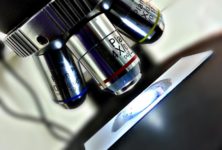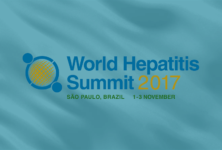The 11th meeting of the WHO European Advisory Group on Tuberculosis Control (TAG-TB) took place on 13 and 14th February in Copenhagen, Denmark. The meeting was chaired by Professor Alberto Matteelli, and widely attended by WHO officers from countries, academia, civil society members and community representatives.
Throughout two days, TAG members discussed in detail the latest TB data, the successes and challenges of implementation of WHO Roadmap to implement TB Action plan for the WHO European region 2016-2020 and the latest WHO/Europe’s digital health initiatives. Among other subjects, a specific attention was given to treatment of latent TB infection (LTBI), TB elimination in low incidence countries and the best ways to address HIV associated TB.
WHO estimates that 320 000 people fell ill with TB last year and 32 000 people died from TB, with death taking place every 15 min. The TB burden remains unequally distributed amongst WHO Europe region countries, with two thirds of all the cases occurring in five countries – Russia, Ukraine, Romania, Kazakhstan and Uzbekistan. Moldova and Kyrgyzstan remain the countries with highest TB incidence rate. Despite the gruesome numbers, the majority of high burden countries have showed decline in incidence rate, with particularly impressive decline in Kazakhstan, Tajikistan, Azerbaijan and Georgia.
Although estimated TB mortality rate has experience 8,3% annual decline between 2010 and 2015 in the WHO Europe region, the estimated TB/HIV mortality rate has annual increase of 3,6%. The TB/HIV incidence rates continue to raise staggering 6,2% annually between 2010 and 2015, and the success rate of treatment outcome is significantly lower amongst HIV positive patient – 41,4% in comparison to RR/MDR-TB patients (51,4%). As one of the observers stated, it might be easier to cure MDR-TB than TB/HIV in some of the EECA countries.
When it comes to RR/MDR-TB, it remains public health crisis, with around 120 000 cases in the WHO region. WHO believes that only 35% of estimated number or RR/MDR-TB cases are detected, with majority of cases coming from 4 countries – Russia, Ukraine, Uzbekistan and Kazakhstan. Europe remains the leading region in MDR-TB incidence around the world, with 2 of 11 newly notified TB cases found with MDR-TB. Furthermore, in 2015 about one in four MDR-TB patients have XDR-TB. Nevertheless, the treatment success rates have been increasing and now reach 76%, with 7 countries achieving targeted 8. 5%.
WHO Technical Advisory Group also discussed in detail the TB elimination in low incidence countries of the WHO European Region, with particular focus on vulnerable groups, cross-border migration, progression from LTBI and in view of dwindling political commitment and visibility. The TB policies of three EU member states – Germany, the Netherlands and the UK were looked at to see what are the latest trends in all the areas, especially, when it comes to asylum seekers and refugees.
Finally, the best ways to treat LTBI were discussed in detail. WHO’s End TB Strategy states that treatment of LTBI is critical in order to end the global TB epidemic, with particular focus on kids and contacts (family members, colleagues etc. of MDR-TB and/or TB patient). As one of the participants poignantly stated that the current MDR-TB patient could have been spared the illness if he had received a treatment as child, when both of his parents were diagnosed with MDR-TB.


 ПОИСК ПО САЙТУ
ПОИСК ПО САЙТУ  поиск по ресурсному центру
поиск по ресурсному центру 



